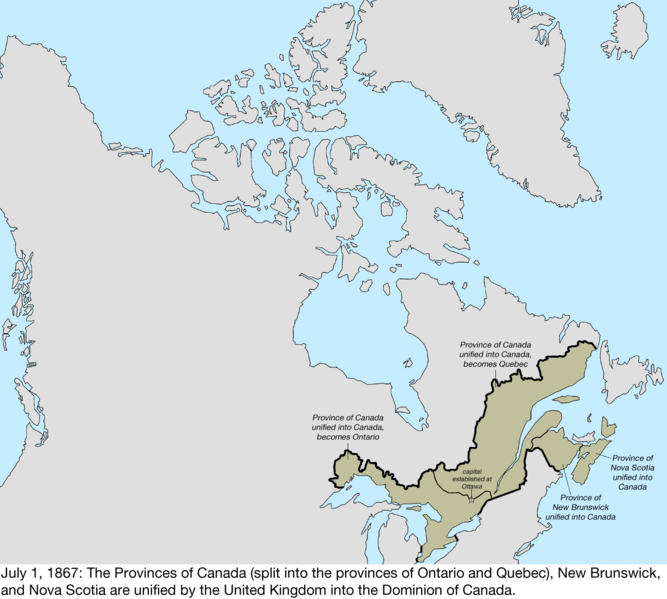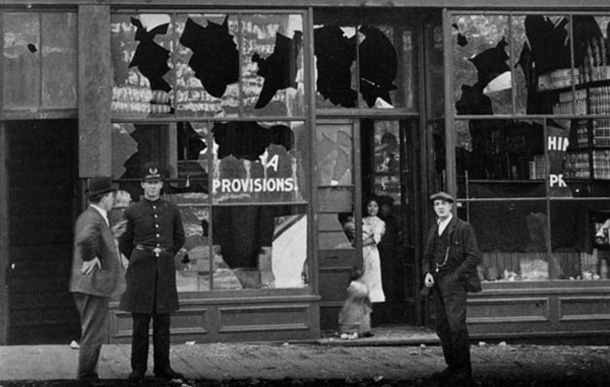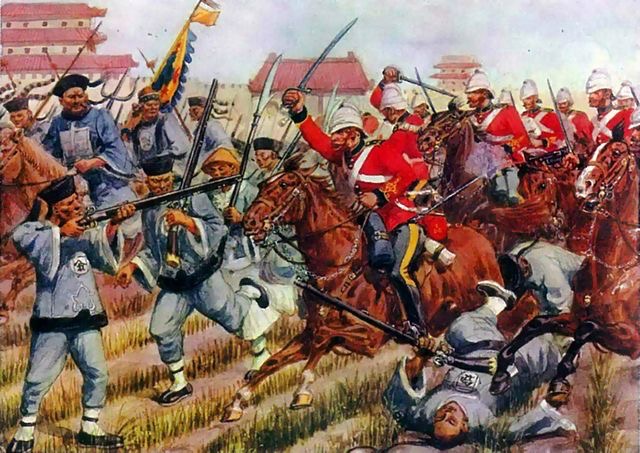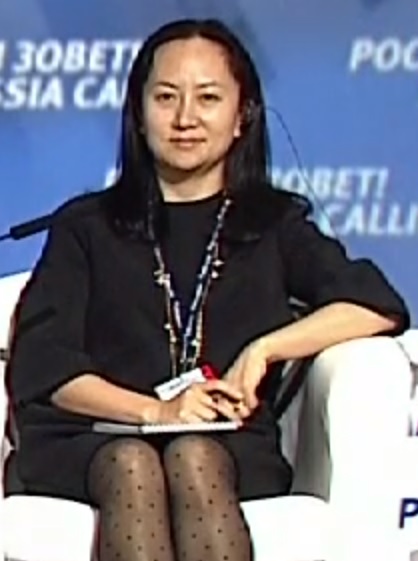By 1885, the Indian Act was in place, most Indigenous people were forced onto reserves, and the nadir of Canadian colonialism (so far) was set. Part 3 of 3 our series on Canada takes us through the residential school system and the racialist ideologies openly expressed throughout this phase of Canadian history.
Category: Canada and Empire
On Canadian foreign policy and its subordination to the needs of the Empire, including the “Five Eyes”.
Civilizations 26b – Canada pt2: disease, extinctions, and colonialism up to the Riel Resistance
Along with colonialism, smallpox and the driving to extinction of the beaver and then the buffalo played an immense role in the creation of what is now Canada. We tell the story of these factors in the development of Canadian colonialism from the days of New France and the Hudson’s Bay Company to the Riel Resistance of 1870, in part 2 of our series on Canada (that will go at least to 3 and probably 4 parts).
Some readings and errata on the Civilizations Resources page.
Civilizations 26a: Canada pt1 – Devolution, Confederation, and Immigration stories
Part 1 of at least 3 on Canada, this one sets up the story of Canadian colonialism with some required historical touchpoints about Canada’s devolution into independence from Britain, the story of Confederation as a series of business deals, and the role of racism in Canadian immigration policy.
The Police System That Terrorizes the Poor and Minorities Is Rooted in the Colonial Past
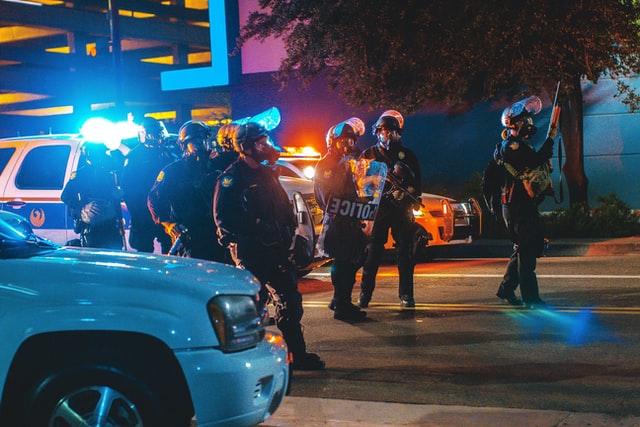
The Minneapolis City Council’s attempt to defund police may have fizzled out for the moment, but the problem of police violence across the United States is unresolved—and much of it stems from the institution’s colonial, counterinsurgency roots.
Here are seven counterinsurgency features of policing and the inequities in the criminal justice system.
1. Counterinsurgency Tactics Are Everywhere.
In the Canadian province of Ontario, when the Toronto Transit Commission (TTC) changed its public transportation fare collection method from tokens to the Presto card, users had a strange experience. Sure, the fare booth was predictably replaced by an inhuman and unforgiving terminal that malfunctions all the time (despite the steep price the province had paid for it). But instead of having less human interaction, TTC passengers found they had more—with fare inspectors who corral passengers into small spaces at stations to test everyone’s cards. In counterinsurgency terms, this is called a cordon-and-search operation.
Another counterinsurgency concept, that of “hearts and minds,” can be seen in a public information campaign to shame fare evasion through posters blanketing subway walls and the sides of buses. Riders were infuriated—not just by the campaign itself but also by abuses and racial discrimination by the fare inspectors. Unsurprisingly, spoofs of the TTC’s messaging followed, as they did in New York City in resistance to the Metropolitan Transportation Authority’s fare evasion messaging.
There is nothing special about Toronto, New York City, or other transit systems that increasingly use these warlike techniques to police customers; what’s happening with the TTC and MTA is a relatively mild example of what happens when counterinsurgency methods are the first resort for any urban problem that arises.
2. Police Don’t Live in the Communities They Police.
Colonial forces are imposed from outside; this prevents too much natural solidarity between the occupier and the occupied. In the United States, the majority of police don’t live in the communities they serve. One Newark officer from the Fraternal Order of Police put it succinctly: “the community hates the police. And you want to put us right in the middle of that with our families?”
The polling is consistent with the idea that one group of people is policing another. A July 2020 Gallup survey showed that 70 percent of Black Americans support reducing police budgets, while only 41 percent of white Americans do. Out-and-out defunding is more commonly supported by Black Americans (according to FiveThirtyEight’s average of two polls, 45 percent of Black Americans polled support defunding, with 28 percent opposed) and opposed by white Americans (with 61 percent of white Americans opposed to defunding and only 23 percent in support of defunding). The difference in public opinion reflects one group benefiting from police security and another suffering from police violence and surveillance.
As Richard Rothstein showed in his book The Color of Law, the racial segregation of U.S. cities was brought about by methodical legal means, racially explicit zoning, and the destruction of integrated neighborhoods. This segregation, too, has consequences for the police-counterinsurgency alignment.
In author James Ron’s book Frontiers and Ghettos: State Violence in Serbia and Israel, he compared the methods of state violence used in a “ghetto,” where a hostile population is meant to be contained by powerful state control but where law and morality still limit its enforcement due to the nature of oppressor and oppressed living side-by-side; and on a “frontier,” where even more devastating warfare is unleashed since state power is more tenuous on targeted populations who don’t live among their oppressors, but the bounds of law and morality are weaker.
In the United States, this theory also has applied throughout its history: domestic ghettos are policed, and frontiers are the sites of total war both at home and abroad. But the more police think of cities as the “frontier,” the more violence they will commit against the policed.
3. Police Get Specialized Counterinsurgency Training.
Police officers are encouraged to take weekend courses in a field called “killology,” developed by retired Army Lt. Colonel Dave Grossman. There, they learn to see themselves as “front-line troops” in a war, presumably on the civilians they are policing.
A critic of killology courses, Seth Stoughton, says they steep police in the worldview that “the officer is the hero, the warrior, the noble figure who steps into dark situations where others fear to tread and brings order to a chaotic world, and who does so by imposing their will on the civilians they deal with.” Another critic, Craig Atkinson, calls the courses “fear porn.” One such training, “The Bulletproof Warrior,” was taken by Philando Castile’s killer.
4. In a Counterinsurgency, Everyone’s a Criminal.
According to defenders of law enforcement, the thinking is: If you don’t want to be policed, don’t commit crimes, right? But the law creates the criminal.
And the number of laws for police to identify those criminals is growing suspiciously. American University professor Emilio Viano notes, quoting the conservative think tank the American Heritage Foundation, that “the ‘number of criminal offenses in the United States Code increased from 3,000 in the early 1980s to 4,000 by 2000 to over 4,450 by 2008.’ From 2000 to 2007 Congress added 56.5 new crimes every year.” The staggering number of laws is incongruous to American society’s actual concerns, as is evidenced by attorney Harvey Silverglate’s book arguing that the average American commits “three felonies a day.”
In this system, the full weight of the law is available to bring down upon anyone at any time.
And once it is brought down on you, you have no meaningful right to a trial.
5. There’s No Right to a Trial in a Counterinsurgency.
In TV cop shows, the police are constrained by clever lawyers and fair-minded judges in the courtroom—but in reality, cases almost never go to trial. As Professor Viano writes:
“In fiscal year 2010, the prevalent mode of conviction in U.S. District Courts of all crimes was by plea of guilty (96.8% of all cases). The percentage ranges from a relative low of 68.2% for murder to a high of 100% for cases of burglary, breaking and entering. With the exception of sex abuse (87.5%), arson (86.7%), civil rights (83.6%) and murder (68.2%), for all other crimes the rate of convictions by plea of guilty is well over 90%. In the… [2012] U.S. Supreme Court decision, Missouri v. Frye, Justice Kennedy, writing the majority opinion, pointed out the statistics that 97% of federal convictions and 94% of state convictions are the result of guilty pleas.”
The fact that 90 percent of cases don’t go to trial is the outcome of two Supreme Court rulings described by Michelle Alexander in a 2012 op-ed in the New York Times:
“The Supreme Court ruled in 1978 that threatening someone with life imprisonment for a minor crime in an effort to induce him to forfeit a jury trial did not violate his Sixth Amendment right to trial. Thirteen years later, in Harmelin v. Michigan, the court ruled that life imprisonment for a first-time drug offense did not violate the Eighth Amendment’s ban on cruel and unusual punishment.”
Regardless of the innocence of the offender or the senseless overzealousness of law writing and enforcement, it is standard operating procedure that the accused do not get their day in court. Instead, prosecutors threaten the accused with shocking sentences, and have them plead guilty to something less to get them into the life-ruining prison system.
Alexander noted that the criminal justice system is unequipped for any other way: “If everyone charged with crimes suddenly exercised his constitutional rights, there would not be enough judges, lawyers or prison cells to deal with the ensuing tsunami of litigation.” The author of The New Jim Crow: Mass Incarceration in the Age of Colorblindness also argued in the New York Times op-ed that “crash[ing] the system just by exercising our rights” could comprise a strategy to combatting the inequities and flaws in the criminal justice system. Blogger Arthur Silber agreed that this strategy could work if done en masse, noting, “[n]othing short of mass non-cooperation has a chance in hell.”
But the price of seeking one’s right to trial is prohibitive. Julian Assange is being publicly tortured right now mainly for doing journalism, but partly also for insisting on his rights to a trial. And Aaron Swartz was hounded to death, driven to suicide by a prosecutor applying the standard operating procedure by threatening Swartz with a 35-year sentence for trying to make scientific publications available to those outside of university paywalls.
In cases relating to the drug war, the goal of police and prosecutors is also to get the accused to turn on one another: in exchange for more lenient punishments, suspects are made to become informants against others—another key element of counterinsurgency and its slow destruction of solidarity in the criminalized, targeted society.
6. U.S. Policing Was Developed in Concert With the U.S. Empire.
Consider one of the founding fathers of American policing, August Vollmer. A U.S. Marine who invaded the Philippines in the Spanish-American War in 1898, he set out to “reform” Berkeley’s police when he became its first chief in 1909. He used the scientific techniques of counterinsurgency developed by the U.S. empire in the Philippines (a system described in Alfred McCoy’s book Policing America’s Empire: The United States, the Philippines, and the Rise of the Surveillance State). Vollmer brought in centralized police records, patrol cars, and lie detectors. Vollmer established a criminal justice program at the University of California, Berkeley in 1916 and wrote books including scientific racist theories of “racial degeneration” and crime. He joined the American Eugenics Society and wondered how to prevent “defectives from producing their kind.”
Smedley Butler provides another example. The military man famously wrote that he had been “a gangster for capitalism,” including that he “helped make Haiti and Cuba a decent place for the National City Bank boys to collect revenues in.” He had done so by, among other things, establishing Haiti’s first police force when the Marines occupied that country in 1915, as Jeremy Kuzmarov describes in his book Modernizing Repression: Police Training and Nation-Building in the American Century. When Butler became police chief in Philadelphia in 1924, he too upgraded police technology and militarized its tactics, including military checkpoints and Marine-style uniforms. The mayor fired him after two years, sending him back to the Marines.
7. Counterinsurgencies Use Auxiliaries.
In counterinsurgency campaigns, state armies and police work with paramilitaries, who do dirty work with plausible deniability.
As Alan MacLeod reported on September 28, there were more than 100 vehicle ramming attacks against protesters since the George Floyd protests started in May, many of which “seem to have the tacit approval of local law enforcement,” given the lack of consequences.
Portland activist Mac Smiff told the Brief Podcast, “We call it a shift change. They’re all the same people… there’s the cops, there’s the sheriffs, there’s the marshals, there’s the DHS [Department of Homeland Security], there’s the Proud Boys, there’s the Patriot Prayer, it just goes on and on. They just take turns.”
It is called impunity: the criminal activities of paramilitaries or proxy forces go unpunished, while the full power of the state is brought down upon the intended victims of counterinsurgency.
The default counterinsurgency mode is a consequence of being ruled by an elite that sees the whole population as the enemy. The model for policing isn’t going to be changed even if Trump is replaced by “shoot them in the leg” Biden. The occupied always challenge the legitimacy of their occupiers: the debate about abolition is not going anywhere.
This article was produced by Globetrotter. Justin Podur is a Toronto-based writer and a writing fellow at Globetrotter. You can find him on his website at podur.org and on Twitter @justinpodur. He teaches at York University in the Faculty of Environmental and Urban Change.
AEP 59: The American Trap sprung on Tiktok and Huawei, with Carl Zha
Back with Carl Zha of Silk & Steel podcast, who we last saw in our episode on the India-China border conflict.
We’re thinking of calling this the Kung Fu Yoga series. In this one, Justin has just finished reading the terrifying book The American Trap by Frederic Pierucci (which Carl notes has 100,000 reviews for the Chinese edition so far). Pierucci was jailed for 30 months in the US in a 5-year long ordeal that ended in his company, the French multinational Alstom, selling off its entire nuclear division to General Electric.
We talk about Pierucci’s case in detail and its relevance to the kidnapping of Meng Wanzhou of Huawei and Trump’s ban of Tiktok: the use of the US’s judicial apparatus to seize billions in assets from other countries, including allied countries, and including entire businesses.
Carl thinks China’s only possible response is to build its own tech stack from the bottom up.
AEP 55: The Meng Wanzhou case part 3 with George Koo
We’ve covered the legal treachery of the Meng Wanzhou case (part 1) and the history of Canadian racism (part 2).
Now in part 3, a deep dive into 5G technology, Huawei, its founder and Meng’s father Ren Zhengfei, the semiconductor industry, and US sabotage of its rivals, with writer and analyst George Koo.
This episode is so detailed you might be able to make microchips after listening.
AEP 54 – On the roots of structural racism in Canada: On the Meng Wanzhou case, part 2
Lord Elgin, who gave Canada Responsible Government, also burned the summer palace in China during the British Empire’s Opium War.
Sir John A. MacDonald sung the glories of the Aryan Race from the floor the House of Commons in 1885.
The poem “White Canada Forever” was aimed specifically at the supposed “Yellow Peril”.
And apparently the claws of the panda have sunk into Canadian society? Dan tried to read all the Canadian media coverage about the case since the BC Supreme court judgement and couldn’t find anything of interest in it.
In this episode we talk about the relationship between racism and propaganda in the past hundred years of Canadian history, and how understanding what Canada is can help you understand the Meng Wanzhou case unfolding today. Part 2 of the series on Meng Wanzhou.
AEP 53: The Kidnapping of Meng Wanzhou and what it reveals about how the world works. Part 1, with KJ Noh
An executive of one of China’s largest tech companies is detained in Canada accused of violating US sanctions against Iran. This story has many threads, and each one reveals something very important about our world. In Part 1, I talk to activist and writer KJ Noh about the BC Supreme Court’s decision to keep Meng Wanzhou imprisoned in Canada.
The Brief Episode 3: Blockade standoff
Police move in on the Mohawks at Tyendinaga, setting off a further wave of blockades, disruptions and direct action from coast to coast. Anna Zalik joins us to discuss the oil and gas industry, and Gord Hill talks indigenous resistance.
The Anti-Empire Project Episode 37: Postcoloniality and the Racist Legacy of the British Empire
A wide-ranging and admittedly bookish discussion with William Patterson historian Navyug Gill and frequent guest and sometimes host of the show, Dan Freeman-Maloy. We talk about postcolonial studies, history, and the British Empire, and the ways that its racism lives on.


